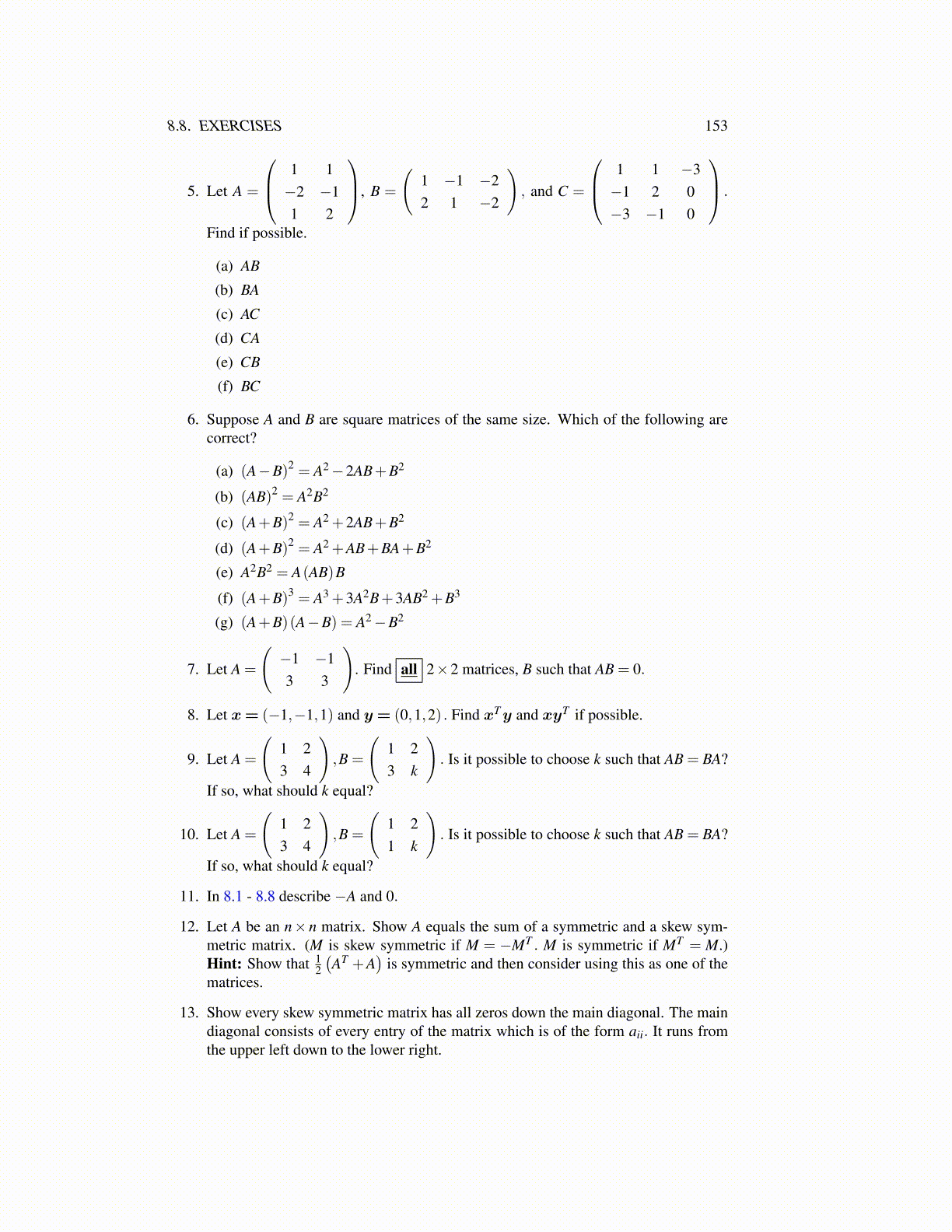
8.8. EXERCISES 153
5. Let A =
1 1−2 −11 2
, B =
(1 −1 −22 1 −2
), and C =
1 1 −3−1 2 0−3 −1 0
.
Find if possible.
(a) AB
(b) BA
(c) AC
(d) CA
(e) CB
(f) BC
6. Suppose A and B are square matrices of the same size. Which of the following arecorrect?
(a) (A−B)2 = A2−2AB+B2
(b) (AB)2 = A2B2
(c) (A+B)2 = A2 +2AB+B2
(d) (A+B)2 = A2 +AB+BA+B2
(e) A2B2 = A(AB)B
(f) (A+B)3 = A3 +3A2B+3AB2 +B3
(g) (A+B)(A−B) = A2−B2
7. Let A =
(−1 −13 3
). Find all 2×2 matrices, B such that AB = 0.
8. Let x= (−1,−1,1) and y = (0,1,2) . Find xTy and xyT if possible.
9. Let A =
(1 23 4
),B =
(1 23 k
). Is it possible to choose k such that AB = BA?
If so, what should k equal?
10. Let A =
(1 23 4
),B =
(1 21 k
). Is it possible to choose k such that AB = BA?
If so, what should k equal?
11. In 8.1 - 8.8 describe −A and 0.
12. Let A be an n× n matrix. Show A equals the sum of a symmetric and a skew sym-metric matrix. (M is skew symmetric if M = −MT . M is symmetric if MT = M.)Hint: Show that 1
2
(AT +A
)is symmetric and then consider using this as one of the
matrices.
13. Show every skew symmetric matrix has all zeros down the main diagonal. The maindiagonal consists of every entry of the matrix which is of the form aii. It runs fromthe upper left down to the lower right.